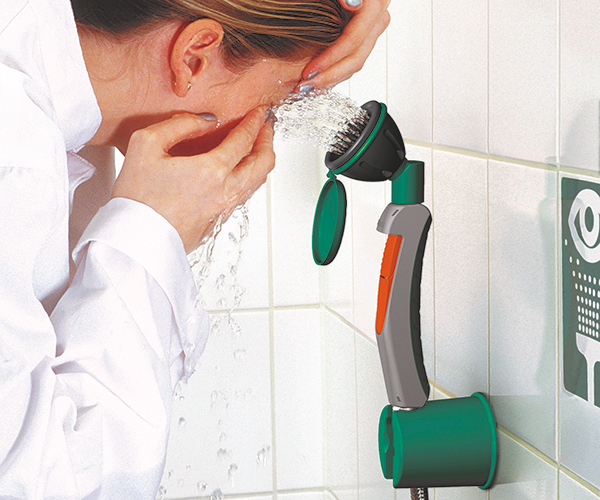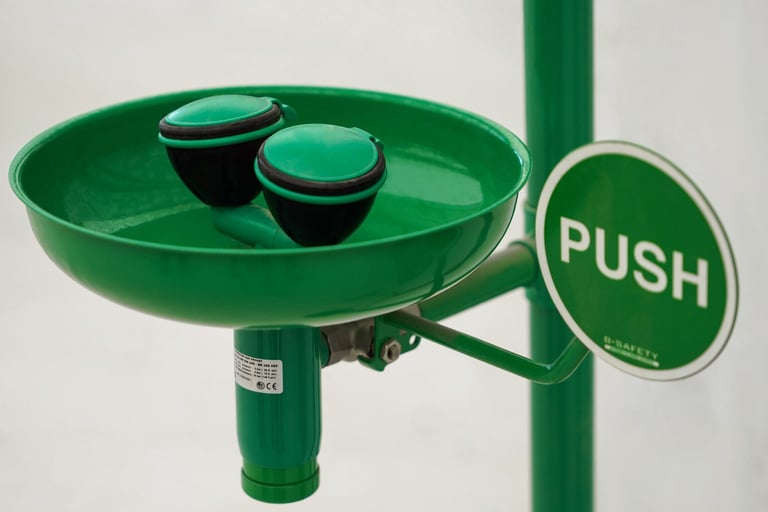Emergency showers




Emergency Shower and Eyewash
Introduction
Emergency showers and eyewash stations are critical safety equipment in environments where hazardous materials are present. These life-saving installations provide immediate decontamination in the event of chemical splashes, burns, or other exposures that could cause serious injury.
Types of Emergency Equipment
Emergency Showers
Emergency showers deliver a high volume of water to quickly rinse chemicals or contaminants from the body. They typically feature:
Overhead shower head
Pull-chain or handle activation
High-flow water delivery (minimum 20 gallons per minute)
Hands-free operation once activated
Eyewash Stations
Eyewash stations provide a gentler flow of water specifically designed for flushing the eyes. They come in several forms:
Plumbed units connected to water supply
Portable, gravity-fed units
Combination units (with both shower and eyewash)
Personal eyewash bottles (supplementary only)
Combination Units
These units feature both a shower and eyewash station, providing comprehensive protection in a single installation.
ANSI/ISEA Z358.1 Standard Requirements
The American National Standards Institute (ANSI) provides specific guidelines for emergency equipment:
Location: Within 10 seconds (approximately 55 feet) of hazard
Access: No obstacles, doors, or impediments
Activation: Simple operation, activates in one second or less
Water Temperature: Tepid water (60-100°F or 16-38°C)
Flow Rate: Minimum 20 GPM for showers, 0.4 GPM for eyewash stations
Height: Shower head 82-96 inches from floor, eyewash 33-45 inches from floor
Installation Considerations
When installing emergency equipment, consider:
Proximity to hazardous work areas
Drainage capability
Adequate water supply
Visibility and clear signage
Protection from freezing in outdoor locations
Accessibility for disabled individuals
Maintenance and Testing
Regular maintenance ensures equipment will function properly when needed:
Weekly: Activate equipment briefly to flush lines and verify operation
Annually: Complete inspection of all components
Documentation: Keep records of all testing and maintenance
Training: Ensure all personnel know location and operation
Emergency Response Procedures
In case of chemical exposure:
Alert a colleague if possible
Activate the emergency shower or eyewash
Remove contaminated clothing while under the shower
Flush affected area for at least 15 minutes
Seek medical attention even after thorough rinsing
Training Requirements
All personnel should receive training on:
Location of all emergency equipment
Proper activation and use
Emergency response procedures
Importance of immediate action
When to seek additional medical help
Conclusion
Emergency showers and eyewash stations are not just regulatory requirements—they're essential safety equipment that can prevent permanent injury when seconds count. Ensuring proper installation, maintenance, and training is a critical responsibility for any facility where hazardous materials are present.
